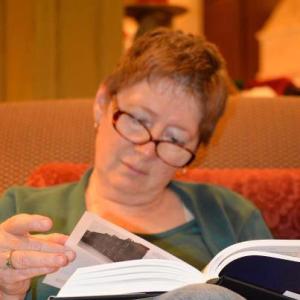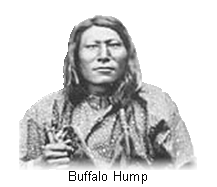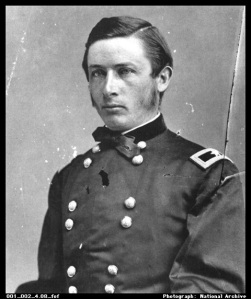by Julia Robb

Matilda Lockhart’s nose may not have started the Comanche wars in Texas, but it’s fair to say the condition of Matilda’s nose escalated the Comanche war from skirmishes to a furnace of death and destruction.
And the Comanche wars created Texas culture.
If we are a tough-minded people, it’s because Texans fought the Comanche for more than 35 years.
Briefly, here’s what happened.
Comanches raided in Texas from the time settlers began arriving in the 1820’s, but it wasn’t full-blown warfare.
Then in March, 1840, Penateka Comanche leaders said they wanted peace.
(Comanche bands included, among others, the Nokoni, Kotsoteka and the Quahadis).
The Penateka needed peace. The Cheyenne and Arapaho were encroaching on the band’s buffalo hunting grounds, The Texas Rangers were on the move and smallpox had swept their villages.
Texas peace commissioners agreed to meet Penateka chiefs at the San Antonio Council House.
But bring your captives in with you, commissioners said.
That didn’t happen.
When thirty-three Penateka chiefs, assorted warriors and their family members, appeared at the conference, they were short a few captives.
They brought Matilda and several Mexican children (apparently captured in Mexico).
Matilda, 15, had been a captive for about two years and was in bad condition.
Penateka women had burned off her nose, burned other parts of her body and she had been raped.
Torture and rape were not unusual Comanche activities, and much of the torture was inflicted with fire.
Peace commissioners were upset with Matilda’s condition.
After Matilda said she knew the tribe had fifteen other captives, peace commissioners demanded the Comanches also bring them in.
Then commissioners announced they would hold the chiefs captive until the hostages were delivered.
The Comanche chiefs tried to escape and all hell broke loose on the streets of San Antonio.
About 30 Comanche warriors were killed as well as three Comanche women and two Comanche children.
The women and children were accidently killed in the heat of battle, it was reported.
Seven white men were also killed.
Then the Comanche went home and burned thirteen captives to death, according to Booker Webster, a boy the Comanche later released.
Mary Maverick was a witness to events and has left a detailed report, which you can read online. Just go to http://www.tamu.edu/faculty/ccbn/dewitt/plumcreek.htm.
Just five months later, about 500 Comanche and Kiowa warriors attacked Victoria and Linnville.
Victoria is near the coast and Linnville (since disappeared) was near Port Lavaca, on the bay.
White settlers drove the Comanches away from Victoria, but the Comanches captured Linnville and plundered the town.
During these raids, the Comanches (led by Buffalo Hump) killed 23 people, captured numerous others, and stole thousands of dollars in property, including 1,500 horses.
White settlers and Texas Rangers chased the Comanches, finally ambushing them at Plum Creek.
The Comanches lost.
After this, settlers living west of Austin lived in fear. They dreaded the full moon and they had reason to. The Comanche Nation (not just the Penateka) murdered thousands of settlers, burned their homes and stole their children.
This continued until Col. Ranald Mackenzie, Fourth U.S. Cavalry, beat the Comanche nation in September, 1874.
Mackenzie ambushed the Comanche in Palo Duro Canyon, in the Texas Panhandle, capturing and destroying the Indians’ winter stores and shooting most of their horse herd; about 1,100 ponies.
After that, the Comanches surrendered and were sent to a reservation at Fort Sill, Oklahoma territory.
I have several thoughts about the Indian Wars in the United States.
Human history is full of sorrow and injustice.
It’s true the Indians were here first.
It’s also true those same Indians took their land from other Indians and were constantly at war with each other.
Some Indian practices were cruel.
Some Whites were cruel. Reading history has taught me that all people and cultures fall short of the glory of God.
Here’s the tagline for my novel, Scalp Mountain, about the Indian wars in Texas: “Everybody was right, everybody was wrong and everybody got hurt.”
I believe that to be true.
If you want to read a great non-fiction account of the Comanche wars, read S.C. Gwynne’s Empire of the Summer Moon: Quanah Parker and the Rise and Fall of the Comanches, the Most Powerful Indian Tribe in American History.
The Comanche were fierce people.
But, as Gwynne said, Texans won because they were “tougher,” and “meaner” than the Mexicans the Comanche had previously faced.
Texans were also “almost impossible to discourage, willing to take absurd risks to secure themselves a plot of dirt, and temperamentally well suited to the remorseless destruction of native tribes.”
Julia Robb is the author of Scalp Mountain and Saint of the Burning Heart, ebooks for sale at amazon.com. She can be reached at juliarobb.com, juliarobbmar@aol.com, venturegalleries.com, goodreads, pinterest, twitter, Facebook, iamatexan.com and amazon author pages.
———————–
Click here for this amazing sign!
